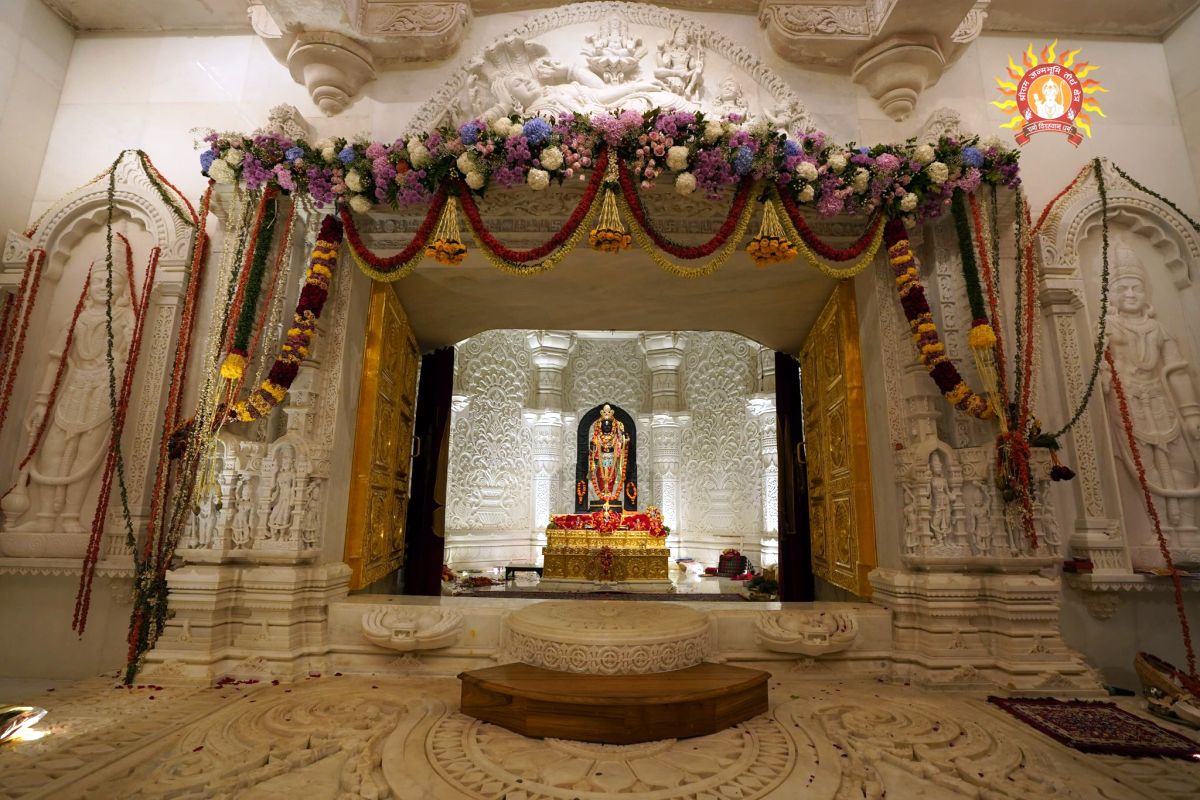How each & every state built the Ram Mandir
January 24, 2024 14:38

Marble from Rajasthan's Makrana, a three billion-year-old rock from Mysuru for the idol, polished teakwood from Maharashtra -- all corners of the country contributed to making Ayodhya's Ram temple a true amalgamation of India.
While temple architect Chandrakant B Sompura belongs to Ahmedabad, the idol has been chiselled by a fifth-generation sculptor from Mysuru. The clothes adorning "Balak Ram" on the consecration day were from Delhi while the ornaments for the idol have been cast in Lucknow.
Champat Rai, general secretary of the Shri Ramjanmabhoomi Teertha Kshetra Trust, said more than 100 construction agencies and firms from different parts of India have contributed to the making of the temple.
"The temple's construction is the result of collective wisdom of some of the best brains in the country. Water and sacred soil from almost all pilgrimage sites in India, including Gangotri, Yamunotri, Kailash Mansarovar, Prayags (there are seven Prayags) and all 'puris' (seven holy towns in India, besides Ayodhya) have been used in the making of the temple," he said.
Earlier, sacred soil from more than 2,500 places from all over India, including Jhansi, Bithoor, Haldighati, Yamunotri and the Golden Temple in Amritsar, besides Thailand's Ayutthaya city -- that connects itself with Ayodhya -- was used in the temple's foundation. Water from 155 countries was also sent for the deity's 'jalabhishek (sacred bath)'.
Polished teakwood procured from the Balarshah and the Allapalli forest ranges of Maharashtra will be used to make the temple's 44 doors, including 14 that will be gold-plated.
"The 'mangal dhwani' played in the sanctum sanctorum when the consecration rituals were underway also included musical instruments from across the country," Rai said.
The instruments included pakhawaj, flute and dholak from Uttar Pradesh, veena from Karnataka, algoja from Punjab, sundari from Maharashtra, mardala from Odisha, santoor from Madhya Pradesh, pung from Manipur, nagada and kali from Assam, and tambura from Chhattisgarh. There was also shehnai from Delhi, ravanahatha from Rajasthan, shrikhol and sarod from West Bengal, ghatam from Andhra Pradesh, sitar from Jharkhand, santar from Gujarat, pakhawaj from Bihar, hudka from Uttarakhand and nagaswaram, tavil and mridangam from Tamil Nadu.
The ornate sculptures of elephants, lions, Lord Hanuman and Garuda installed at the main entrance leading to the temple have been made using sandstone brought from Rajasthan's Bansi Paharpur.
Lakhs of people watched the 'pran pratishtha (consecration)' ceremony on Monday on television in their homes and neighbourhood temples, becoming part of the historic event held just months before the Lok Sabha elections.





 © 2024 Rediff.com -
© 2024 Rediff.com -